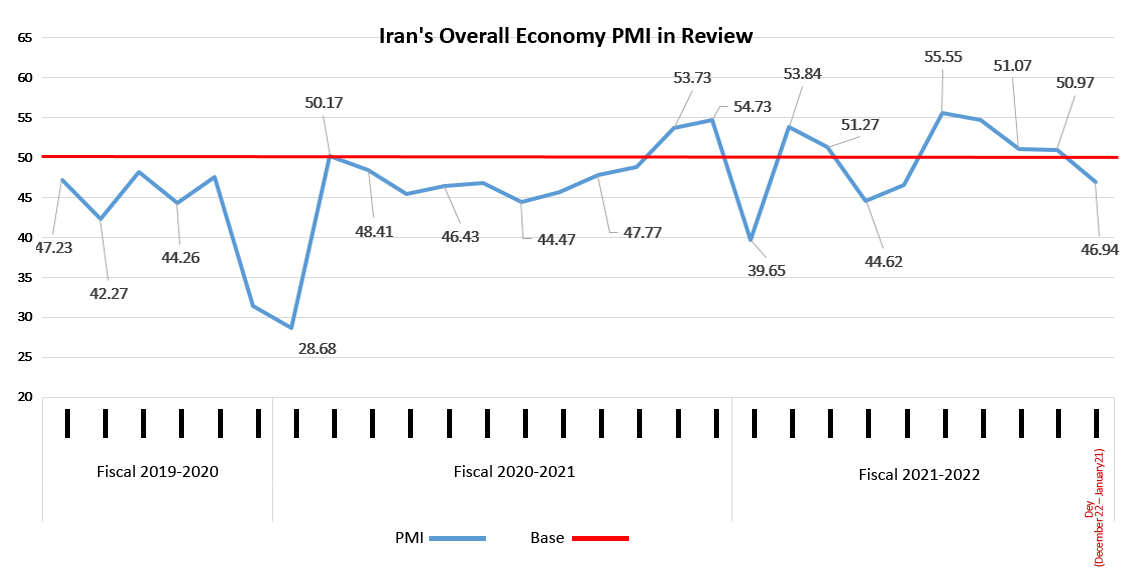Iran’s new PMI data for the fiscal month of Dey (December 22, 2021 – January 20, 2022), released by the country’s Chamber of Commerce slipped below the threshold to the lowest in five months.
The Purchasing Managers’ Index, known by its Farsi acronym Shamekh, for Iran’s overall economy has fallen from 50.97 in the previous month to settle at 46.94 in Dey.
The Statistics and Economic Analysis Center of Iran Chamber of Commerce, Industries, Mines and Agriculture, the sponsor and coordinator of the survey, announces the whole economy PMI data in a report every month.
The headline PMI is a number from 0 to 100, such that over 50 shows an expansion of the economy when compared with the previous month. A PMI reading under 50 indicates contraction and a reading of 50 implies no change.
PMI is an index of the prevailing direction of economic trends, aiming to provide information about business conditions to company directors, analysts and purchasing managers.

Click on the image for better view
Decreased purchasing power, liquidity and severe shortages of demand were the main factors contributing to decreasing PMI in the month under review.
The “business activities” sub-index in Dey (47.07) declined to its lowest in five months. This sub-index faced recession in services, agricultural and construction sectors following a sharp fall in demand and liquidity.
The “new order” sub-index (43.14) has also continued to drop this month to the lowest in six months. Many businesses in this month faced severe fall of demand following a reduction in purchasing power and liquidity part of which was also due to the political atmosphere amid Iran’s talks in Vienna with five world powers – known as P4+1.
The "raw material inventory" sub-index (43.81) in Dey, also dropped to a nine-month low due to shortage of liquidity, high inflation and uncertainty about forex rate.
The PMI reading of “employment” (49.91) dropped but with a lower slope compared with the preceding month. Experts believe that the economic activists in construction, services and agricultural sectors continue to work with the minimum workforce due to reducing orders, increasing pressure of costs and the shortage of liquidity.